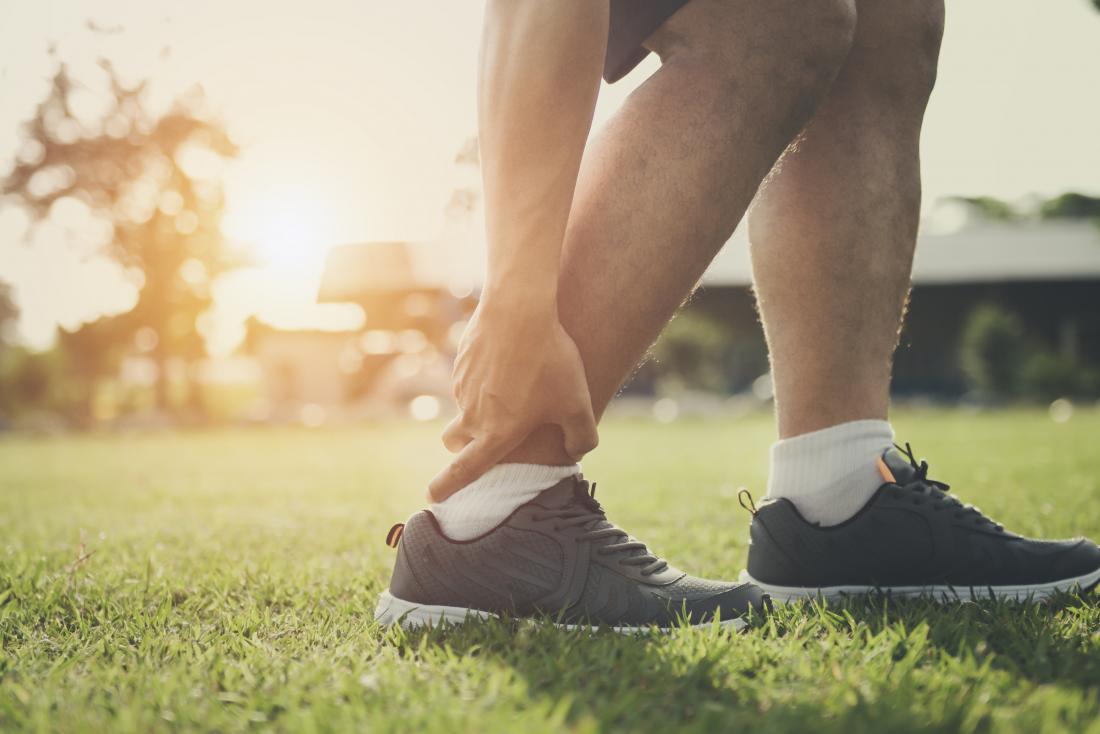It was the crucial last 3 seconds of the game. The player holding the ball was likely to dunk anything that crosses his path through the hoop. As he rampaged forward to make that much needed lay-up, a bigger player blocked him in mid-air and sent the ball flying in a different direction while both players landed on each other, the bigger guy’s heavy weight crushing the other player’s right leg.
A young guy went to the gym for the first time. He started working out on the bench press and did some arm curls and crunches and bent-over rowing without consulting his trainer or instructor. Later on, he felt sore in most part of his body especially his biceps, chest, and back.
In the first scenario, the player with the crushed right leg may suffer from leg sprain such as ankle or knee sprain. Ankle sprain is the most common basketball injury which often occurs when a player lands on another player’s foot or the ankle rolls too far outward.
Sprain is a stretching or tearing of ligaments or joint capsules connect one bone to another in order to stabilize joints and prevent excessive movement. More often, sprains occur when a joint is forced from its normal range of motion, by rapid changes in direction or by a collision. Common locations for sprains are your ankles, wrists and knees.
Sprain Signs & Symptoms
Since sprains and strains vary in severity, its signs and symptoms depend on the severity of the injury.
Sprains can cause rapid swelling and can be classified into mild, moderate and severe.
• Mild is when your ligament stretches excessively or tears slightly. When you move, the area becomes somewhat painful. It’s quite tender but there’s not much swelling.
• Moderate is when the fibers in your ligament tear but don’t rupture completely. There is difficulty in movement and the joint is tender and painful. There is swelling, area discoloration from bleeding, and unsteadiness when you put weight on your leg.
• Severe is when one or more ligaments tear completely and the area is painful. You can hardly move your joint normally or put weight on it. If you try to walk, your leg feels as if it will give way. The joint becomes very swollen and also can be discolored. The injury may be difficult to distinguish from a fracture or dislocation, which requires medical care.
On the other hand, the gym buff newbie could be suffering from muscle or tendon strain for overdoing his work out program.
Strain is a stretching or tearing of muscle which often occurs when muscles suddenly and powerfully contract — or when a muscle stretches unusually far. This is called an acute strain. Overuse of certain muscles can lead to a chronic strain. The most common strain are hamstring and back injuries. Some people commonly call muscle strains “pulled” muscles.
• Mild strain is when pain and stiffness occurs with movement and may last a few days.
• Moderate strain has partial muscle tears resulting in more extensive pain, swelling and bruising. The pain may last one to three weeks.
• Severe strain is when the muscle is torn apart or ruptured and there’s significant bleeding, swelling and bruising around the muscle. Muscles may not function at all and may need surgical repair if the muscle has torn away completely from the bone.
Sprain & Strain Treatment
Treatment depends on the severity of the injury. Oftentimes, self-care measures and over-the-counter pain medications, such as SOMA or carisoprodol, are all that you’ll need.
To treat sprain, keep the joint still by a short period of immobilization so the ligaments can heal. Then try some special exercises to strengthen the muscles that help hold your ankle in place. If your muscles and ligaments are not strong enough to prevent re-injury, you might need surgery to repair the damage and restore its function.
For a strain, seek medical help immediately if the area quickly becomes swollen and is intensely painful or if you suspect a ruptured muscle or broken bone.
Mild sprains and strains usually heal quickly with rest, ice, compression, and elevation (R.I.C.E.). The key to recovery is an early evaluation by a medical professional. Once the injury has been determined, a treatment plan can be developed. With proper care, most sprains and strains will heal without long-term side effects.







Be First to Comment